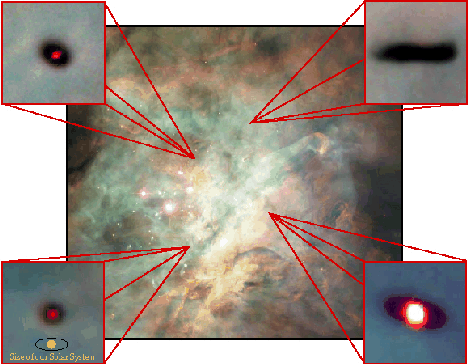Explanation: How do planets form? Astronomers are finding out by studying one of the most interesting of all astronomical nebulae known, the Great Nebula in Orion. Insets to above mosaic show several planetary systems in formation. The bottom left insert shows the relative size of our own Solar System. The Orion Nebula contains many stellar nurseries. These nurseries contain hydrogen gas, hot young stars, proplyds, and stellar jets spewing material at high speeds. Much of the filamentary structure visible in this image are actually shock waves - fronts where fast moving material encounters slow moving gas. Some shock waves are visible near one of the bright stars in the lower left of the picture. The Orion Nebula is located in the same spiral arm of our Galaxy as is our Sun.
1998 1999 2000 2001 2002 2003 2004 2005 2006 2007 2008 2009 2010 2011 2012 2013 2014 2015 2016 2017 2018 2019 2020 2021 2022 2023 2024 |
Январь Февраль Март Апрель Май Июнь Июль Август Сентябрь Октябрь Ноябрь Декабрь |
NASA Web Site Statements, Warnings, and Disclaimers
NASA Official: Jay Norris. Specific rights apply.
A service of: LHEA at NASA / GSFC
& Michigan Tech. U.
|
Публикации с ключевыми словами:
Orion - звездообразование - ударные волны - планетная система
Публикации со словами: Orion - звездообразование - ударные волны - планетная система | |
См. также:
Все публикации на ту же тему >> | |
Мнение читателя [1]
